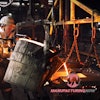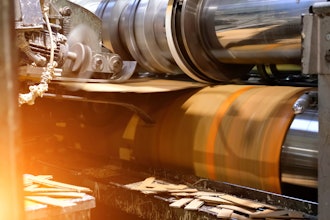
It is a phenomenon that is referred to with a catchy rhyme: “the brain drain.” Older workers are leaving companies, taking their experience and knowledge with them. And, for various reasons, the reservoir is not being refilled at the same rate. Knowledge leaves, and the tank threatens to go dry.
This need not be the case. There are plenty of good brains still around in people of all ages. However, decision-makers in U.S. industry must adjust to changing demographics, and soon, or there will be serious repercussions. For example, industry leaders need to examine policies regarding the retirement, or early retirement, of baby boomers, and to learn how to attract a new generation of workers. This article will offer an overview of the issue and will suggest some methods for replenishing the “brain drain.”
The “brain drain” has already advanced rapidly enough to short-circuit productivity at many companies. The negative results can be particularly acute in plant maintenance and operations departments.
To cite just one example, in a paper mill, older employees were encouraged to take early retirement. Cutting back on personnel, especially those who had reached high-level salaries, seemed like a quick way to save money in a downturn. But machine failures began to spike. Downtime was more expensive than the downturn had been. And nobody on-site knew how to fix the problems.
In the case above, the mill was forced to seek emergency technical assistance from its manufacturing partners. In similar cases, some companies have had to hire back their pensioned-off workers as consultants—and at a higher rate than they were paying them when they were regular employees.
As for hiring fresh young talent to train, that has become a shrinking option. Often, the industry jobs most in need of replenishment are not even on the radar screen of today’s young job-seekers.
Many graduating students, encouraged by their parents, pursue employment in white collar professions without even considering other opportunities. Nor have universities and community colleges kept pace with the need for technical and vocational training. Interesting jobs--with pay levels and possibilities for advancement that sometimes rival or exceed those of white collar jobs--abound, but schools are not up to speed with the changes.
How deep are the effects of the “brain drain”? According to a survey conducted by the Society for Human Resource Management (SHRM), 72% of the HR professionals polled stated that the loss of talented older workers is a problem or potential problem for their companies.
What’s the solution?
First, communication is key. There has been little or no dialogue between industry and schools to help identify what types of training and skills need to be provided for next-generation workers.
An additional communications solution is for industry to go directly to young people. Have sales reps give presentations. Have industry personnel initiate or assist with courses, such as the pump school that has become a success at Texas A&M, or the mechanical engineering training available at British Columbia Institute of Technology. Donate equipment so that students can see, and perhaps become interested in, the way things work.
Perhaps most important: Explore, and respect, the way young people learn and communicate best. They like online availability of knowledge. They like iPhones, iPads, mobile apps. Show young people how, from the shop floor, they can often just pick up a tablet or iPhone to get the info they need to repair equipment, to solve problems, to devise creative ways to boost productivity.
For example, one major manufacturer has developed a dial set or drive-up method that is accessible via iPhone, so that a young employee can use it on-site to calculate how far to drive a bearing up shaft during installation. A second app helps employees determine the correct relubrication quantities and lube intervals for an application. New apps are sure to develop as demand increases.
Although industry needs to embrace these high tech resources, it should not neglect traditional training. Keep some experienced employees on-staff. Keep the tried-and-true, human to human approach in place, perhaps even expand the programs, so that the reservoir of knowledge increases instead of evaporating.
Like a sports team, industry functions best when there are veterans as well as new blood. And an ad hoc approach is not enough. The clipboard needs to be out not only during a crisis, such as in the last few seconds of the game or when the machinery breaks down, but all season long. Industry must look ahead, have a blueprint, find a systematic way to recruit talent and to transfer knowledge. That’s the only way to replenish a “brain drain.”
Paul Michalicka is North American area sales manager for maintenance products, SKF USA Inc., based in Lansdale, Pa. He can be contacted at [email protected]; phone: 416-299-2894.






















